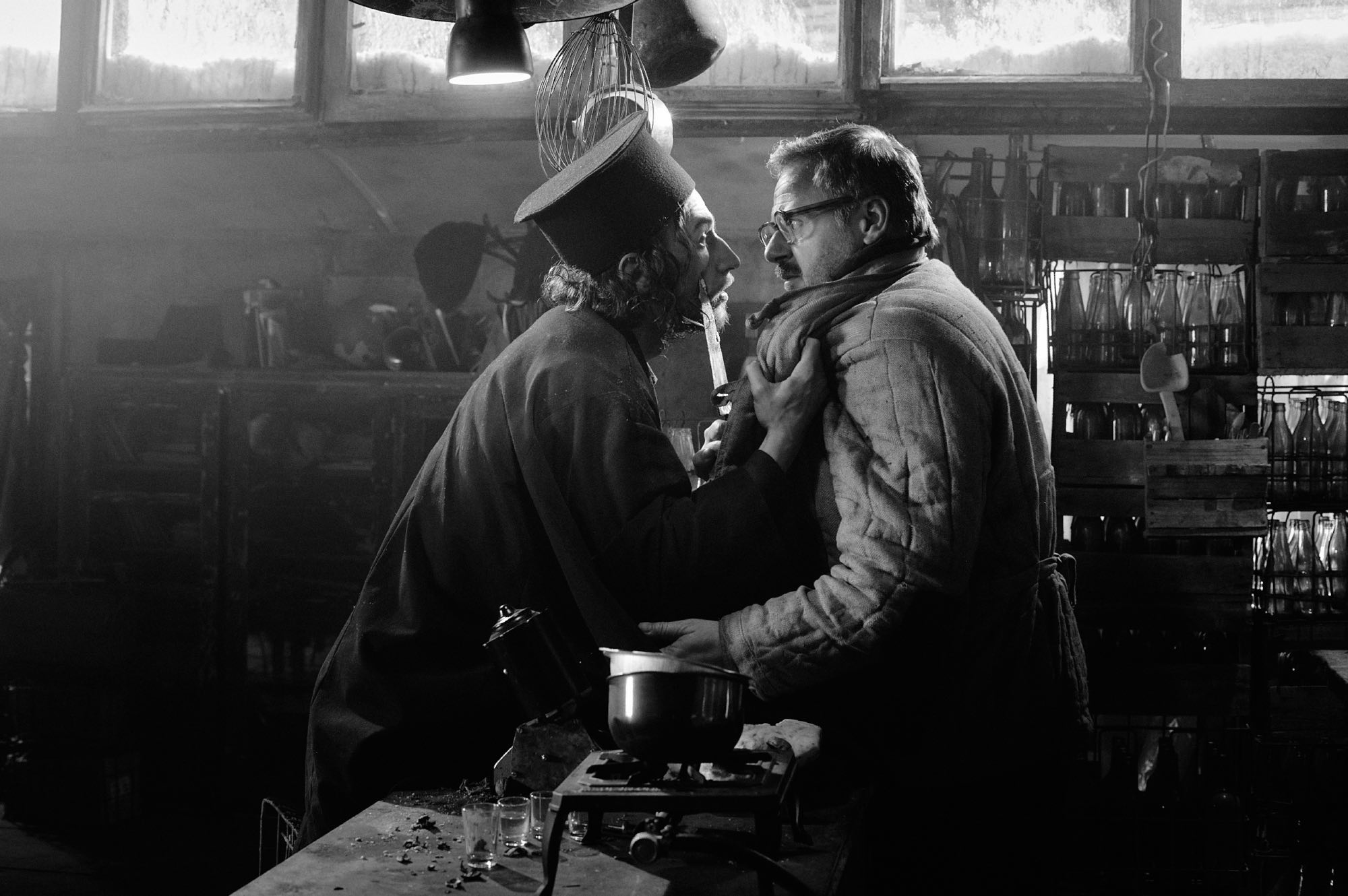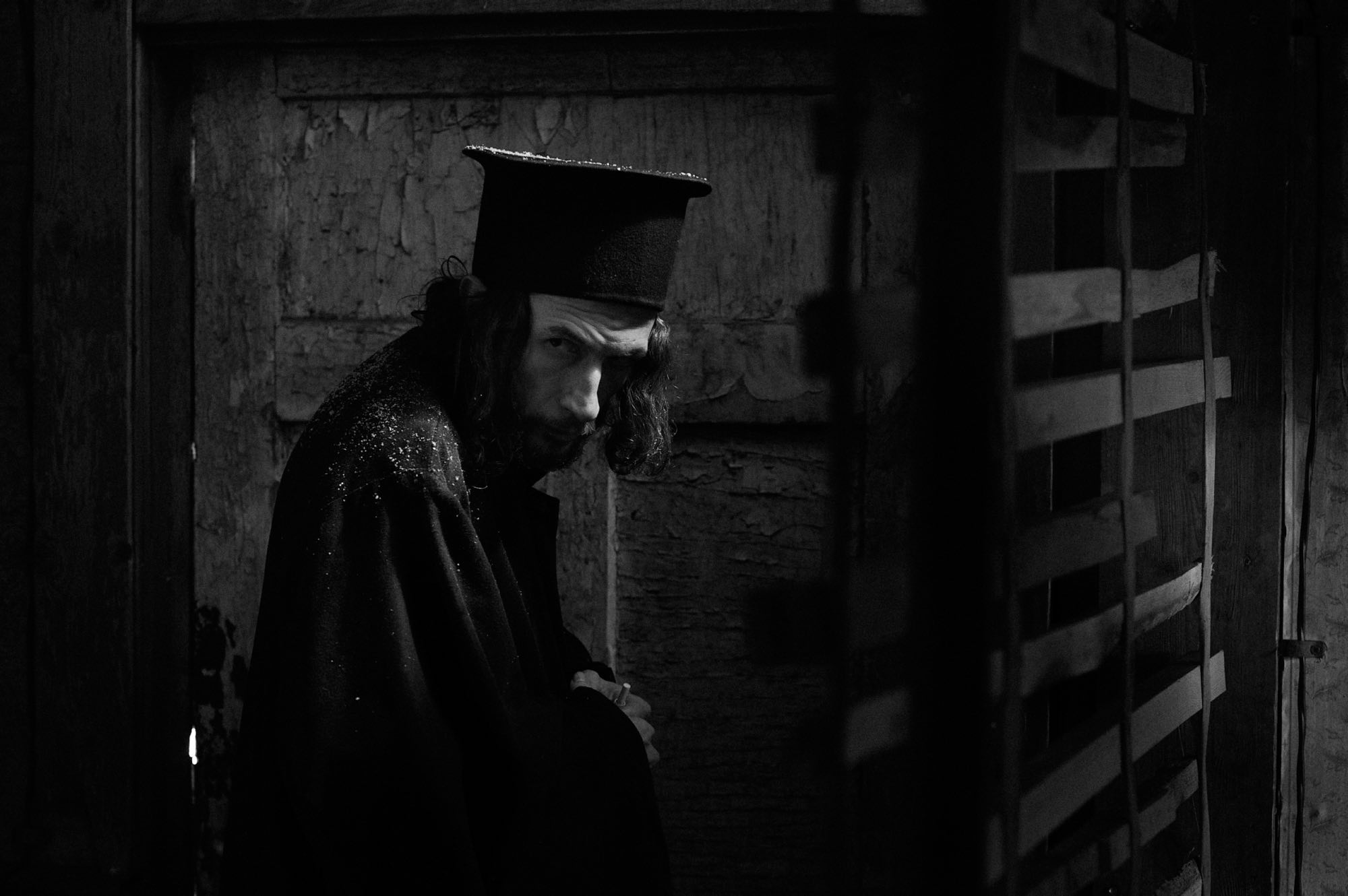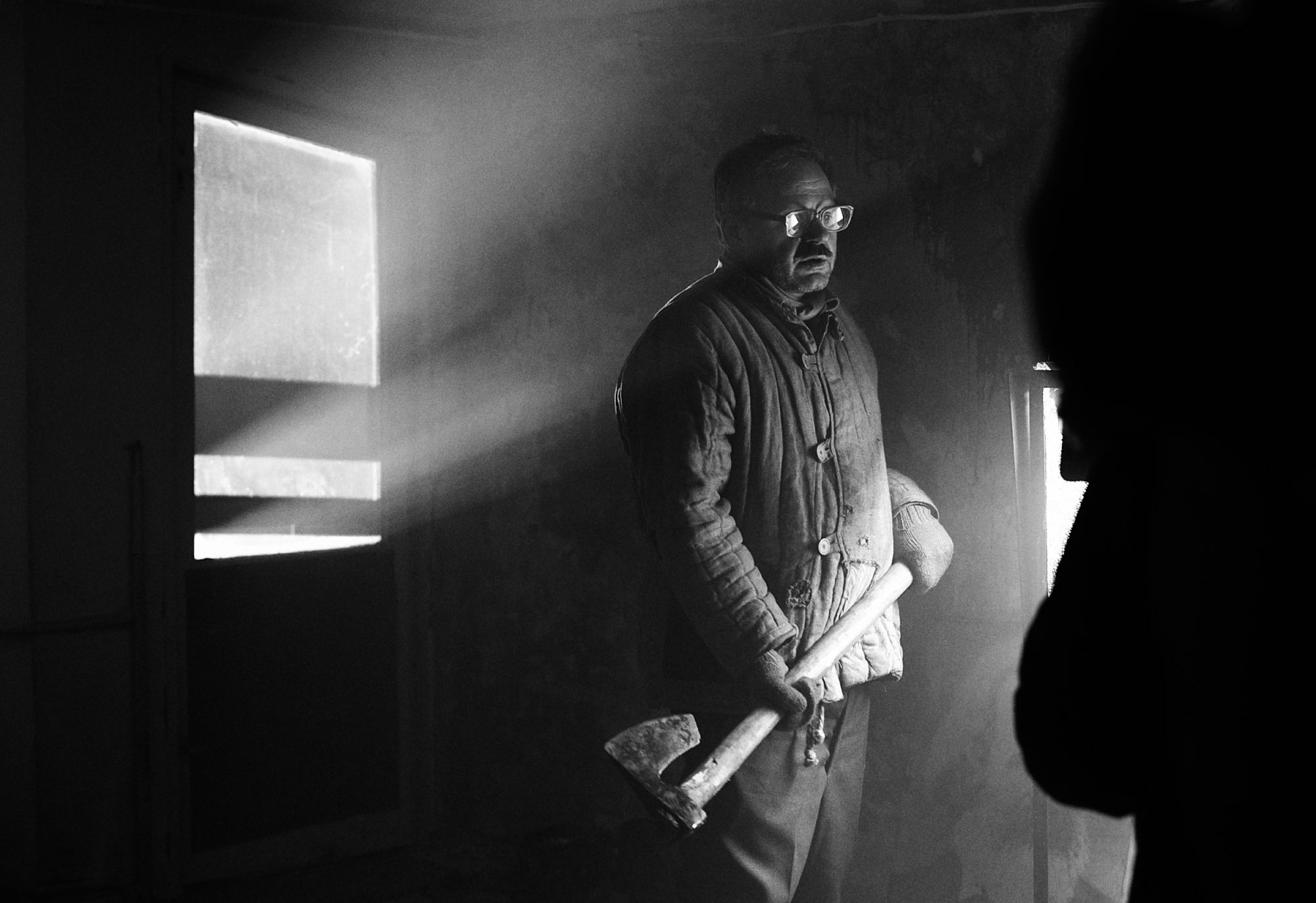
Set in an isolated wood cabin during a heavy snow storm, Director Andrey M Paounov and Screenwriter (and long time DN alum) Alex Barrett’s frosty feature January is the tale of an encroaching mystery that is set to devour the lives of five men who find themselves caught in a limbo between life and death, past and present, communism and capitalism, known and unknown. It’s inspired by Yordan Radichkov’s play of the same name but whilst that play is concerned with a world where small settlements start to perish, Paounov and Barrett’s film is one where the world and reality itself is at risk of collapse. Shot in gothic black and white photography and with a clever acknowledgement of cinema’s relationship with itself, it’s a feature with striking imagery that’ll linger long in the mind after the credits roll. DN sat down with the filmmakers ahead of January’s arrival in cinemas and on digital on January 27th via Bulldog Film Distribution to talk through their extensive collaborative process, from the philosophy of their cinematic references to the construction of the film’s absurd and discombobulating atmosphere.
January is noted as being inspired by Yordan Radichkov’s play of the same name, what was it about that story that attracted you to take influence from it?
Andrey M Paounov: The story has a great mix of different elements – classical theatre, a Beckettian absurdity, existential drama, a look behind the Iron Curtain, and all the elements that you find in genre cinema. It was fascinating to try and find a way to translate this mix into cinema, particularly the combination of genre and abstract absurdism.
And in what ways did you set out to differ from the original source material?
AP: The play is very much set in the context of the 1970s, so we knew we had to update it. The play is concerned with a world where small villages are dying and disappearing. We wanted something more universal, something more contemporary.
Alex Barrett: If the play is about how the villages are disappearing, the film is about how we’re all disappearing. The collapse of society and the end of the world.


The other work that has a number of parallels with January that jumped out to me when watching was The Shining, was that a film that was influential at all? If not, were there any other films you drew from?
AP: I always saw The Shining not so much as an influence but as an element. January draws from everything I love about cinema, from Tarkovsky to trash. All of this was mixed through my personal blender and is right there for anyone to discover on the screen. But the homage to The Shining performs a different function and adds a postmodern layer to the film. It’s quite direct and a little bit cheeky, but right from the beginning I was convinced that during the film’s climax things needed to fall apart in meaning and content. The characters can no longer communicate, and even the film itself loses its mind. By referencing one of the most famous films in cinema history, it adds an ironic dimension and stands as a commentary on the very structure of cinema as a postmodern pursuit. What if Tarkovsky made a horror? It’s a copy of a copy within a copy. A dream within a dream.
AB: For me, The Shining was a genre touchstone – as Andrey said, the combination of genre and absurdism was one of the things we set out to explore and to do that you have to break down aspects of genre and look at generic conventions. Kubrick was a titan of cinema, and The Shining stands as one of the all-time great horror films. So of course it was something we looked to, especially when you consider some of the other similarities with our text, like the hotel setting and the snowstorm. It was a natural fit. But it wasn’t the only Kubrick film I thought about while writing – we spoke a lot about how much of the mystery you need to reveal and how much you need to explain. For me, 2001 is a film that balances this line brilliantly. It’s completely comprehensible and deeply mysterious all at once.
The characters can no longer communicate, and even the film itself loses its mind.
AP: On the absurdist side, there was Beckett and Pinter. If you reduce the original play to essentials, January becomes Waiting for Godot. So it was an organic process to take the text in that direction. I stripped the text down to the bone and when I listened, the characters began to speak in a different way, with fewer words and bigger pauses. This is where Pinter started to appear. I’m not a literary critic to ponder the place of one or another author in world literature. For me personally, Radichkov and Beckett are close. And that’s why it made sense to work with a British writer like Alex, who understands that world.
AB: I get asked a lot about how I ended up working on this strange Bulgarian film, but it makes more sense than people think. It was a combination of Western and Eastern European thought.
AP: And we looked at both Westerns and Easterns when prepping the film. I always said I wanted it to have the pace and feel of a Western.
AB: Yeah, we spoke as much about that as horror. I remember us discussing Leone and Kurosawa – all those samurai films that are basically Westerns – and the Eastern Westerns like Motyl’s White Sun of the Desert.

What was your screenwriting process? January is a film which gradually offers the audience more information as it goes on. Is there a challenge in deciding what information to share and what to withhold?
AB: We spent a week together in Sofia, where Andrey basically brain-dumped all his ideas on me. I then came back to London and tried to give it all some shape, and wrote the first draft in a few days. After that, we’d bounce things around, have long discussions, and take it in turns to scratch up ideas. We were lucky to be part of the Torino Film Lab, which fed into our development and gave us excuses to meet up – I think we met in France, Germany and Italy, which was a lot of fun. We were writing in English at that stage, so I did the typing up. But obviously Andrey did the final Bulgarian draft.
There was definitely a challenge to finding a balance between not frustrating the audience and not over-explaining it. It’s something we gave a lot of thought and discussion to. The film, ultimately, is an absurd mystery, so we never wanted to fill in all the blanks, but knew there needed to be some kind of meaning, or purpose, within the film’s breakdown of meaning. It kind of goes back to my point about 2001 earlier – how can you make something which is at once comprehensible but remains mysterious and open to interpretation? Bergman’s Persona would be another great example of this, especially in relation to that kind of breakdown in meaning that Andrey mentioned.

The story innately brings a few tricky production challenges, namely the snowy conditions and the incorporation of a number of different animals, how was it managing both of those aspects of production?
AP: The snow is mostly fake. Usually, it snows like crazy at that time of year, and we were expecting snow, which never came. The one year it didn’t snow! We had only two days of snow during the whole film. But real snow doesn’t look real anyway. So the whole world is created. It was a big challenge, to create all different shapes and sizes of snow. But the art department did a great job.
We spent a lot of time with the animals. We knew what they could do, but we didn’t have money for specially trained animals, so we had to train them ourselves. The dog was born when we started building the sets, and he grew up with the crew, so he had a very good relationship with us.
I wanted to create an abstract world, one that could support the abstract and absurd ideas in the script.
Did you shoot on location? And if so, how long was production?
AP: Everything was real. I’m a documentary guy, I can only shoot real. We built the bar in front of an old hotel, right there in the mountains. You have to create a world in order to create a film, to bring it to the actors, to be in the real world, the real circumstances. We shot in 23 days. So really fast.

Could talk about your approach to the black and white cinematography? What tone were you looking to establish?
AP: First of all I wanted to create an abstract world, one that could support the abstract and absurd ideas in the script. And the idea of the winter, the white snow, was very strong visually, so that helped with the decision to shoot in black and white – because you can create images which are a lot more graphic, a lot more abstract, in black and white. I was also looking forward to establishing some kind of aesthetic relationship between this film and the Socialist Arthouse cinema of the 70s because I thought combining the genre elements with the arthouse elements gave an interesting commentary on the content of the original text. We shot with vintage Soviet anamorphic lenses to help achieve this, too.
What can we expect from you both next?
AP: Making more films. You know, trying to keep going. I’m developing a new documentary and starting to scratch up a new fiction project.
AB: Trying to make art films in the UK is hard, but I have a couple of things I’m trying to find the right producers for, alongside a couple of more commercially-minded projects – including an all-singing, all-dancing musical, which I’m attached to direct. But, honestly, with the way things are with filmmaking in the UK, who knows what’s next!


